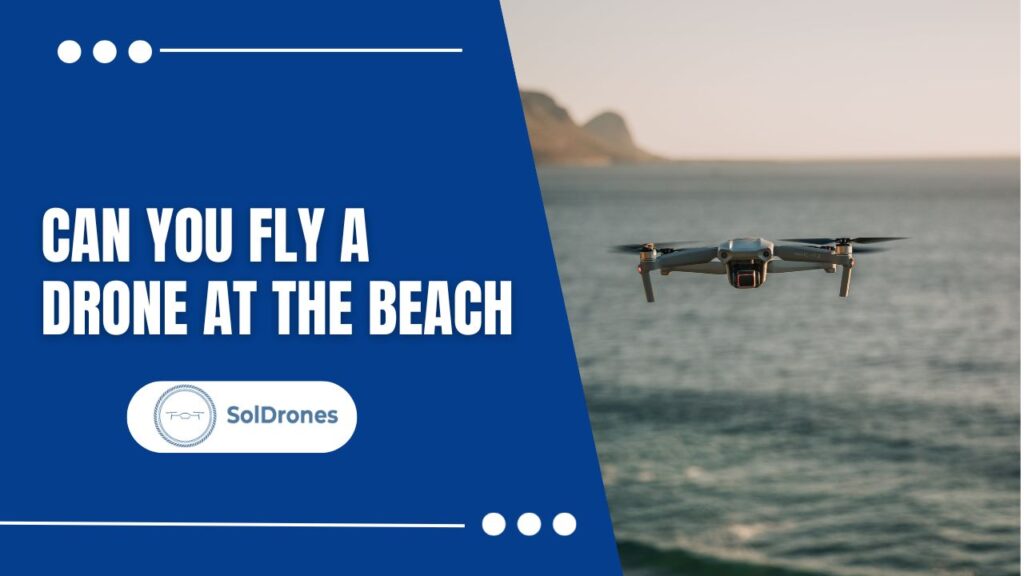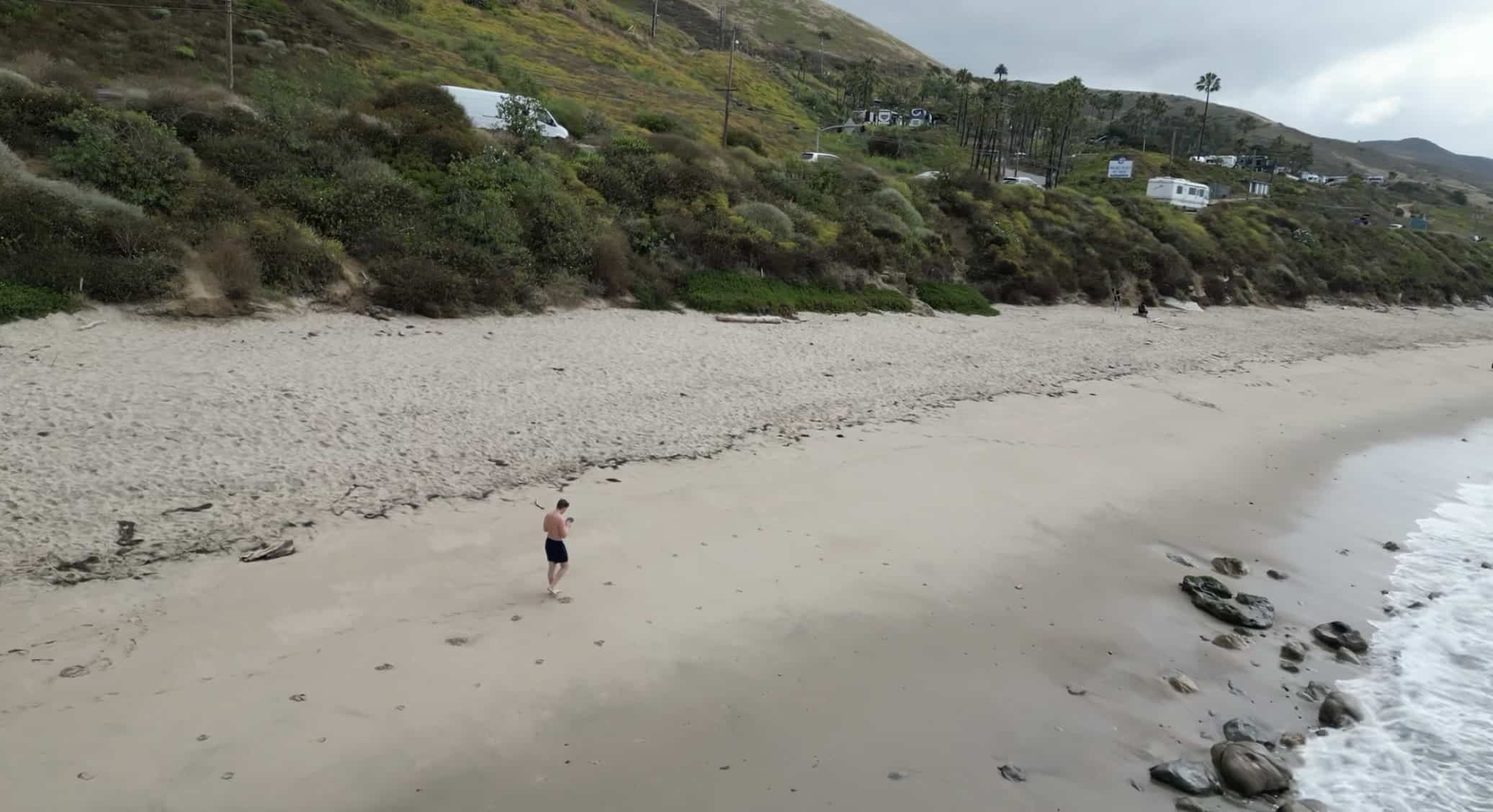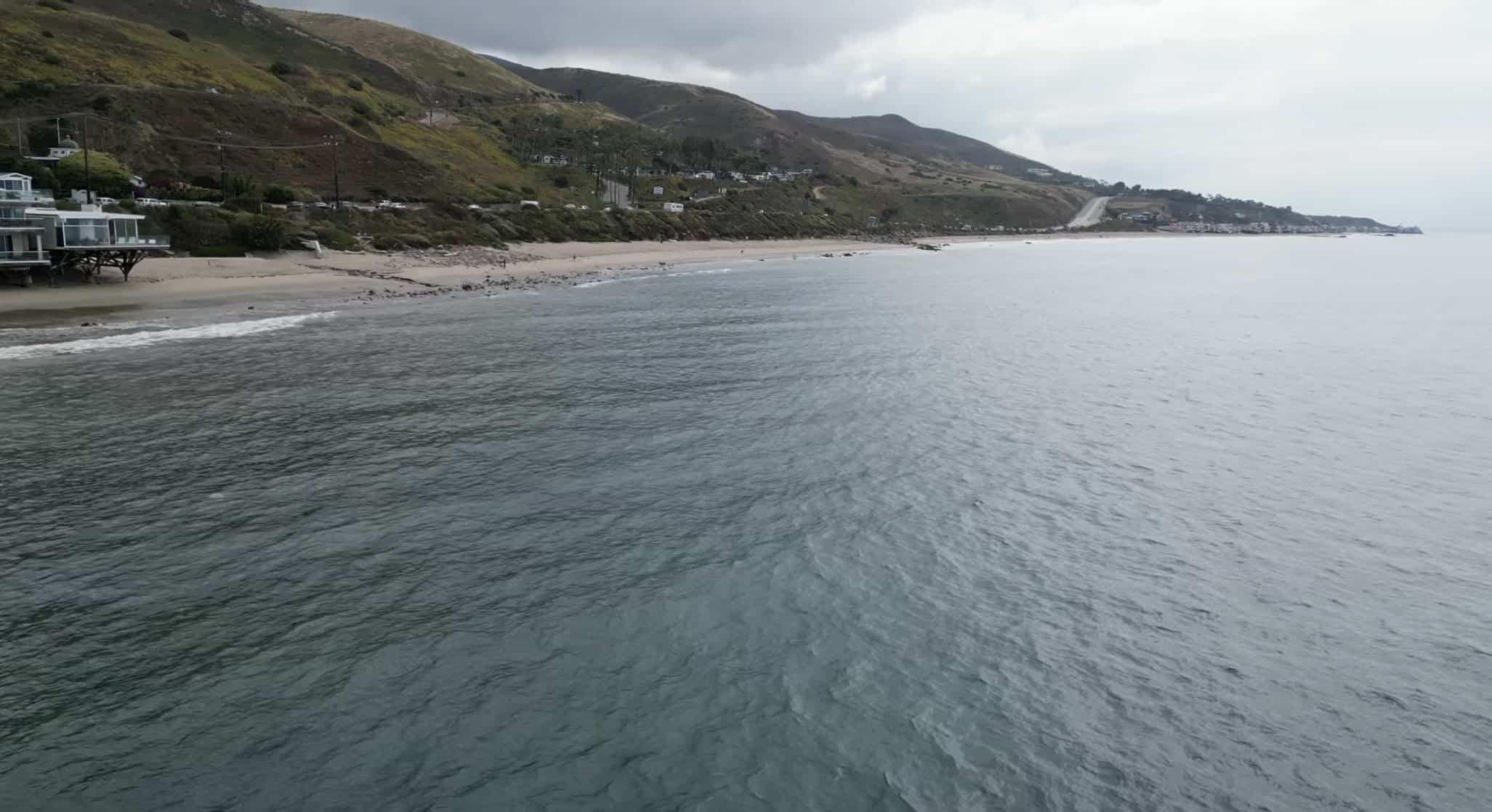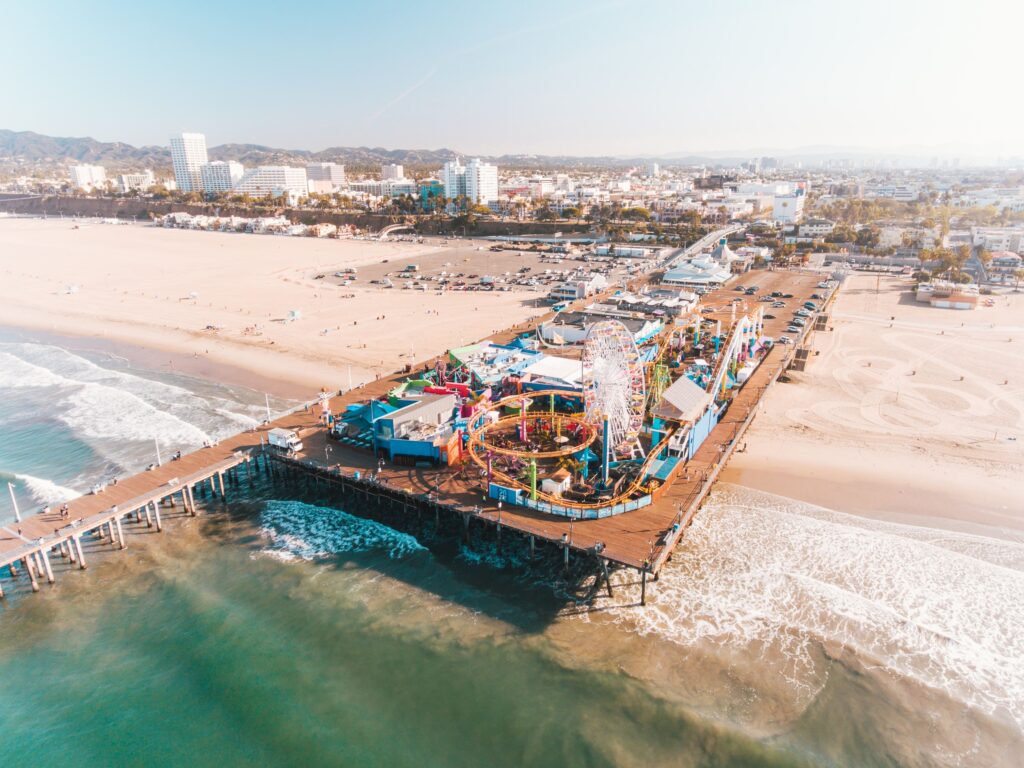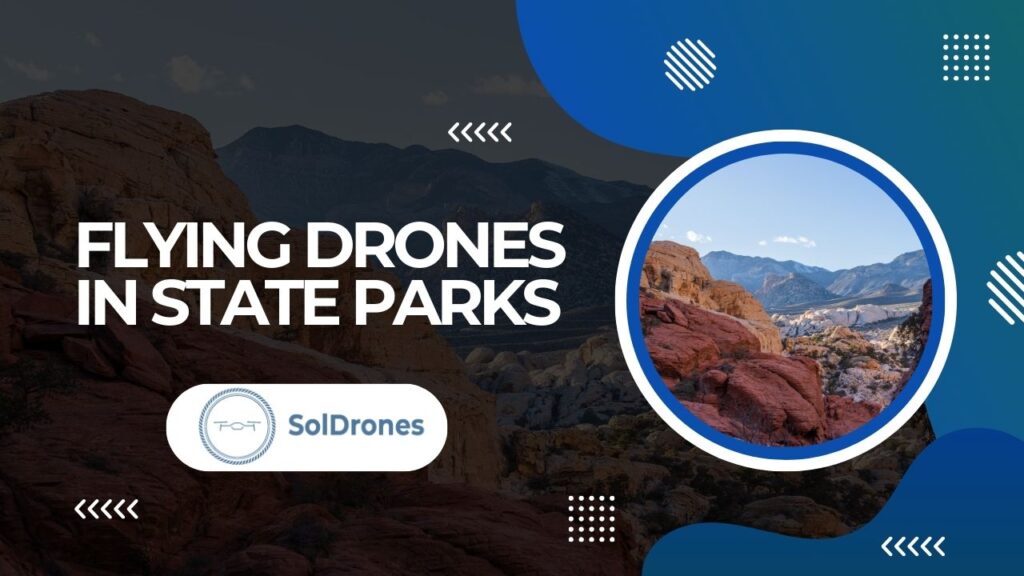Have you ever gazed up at a clear blue sky at the beach and spotted a drone soaring gracefully overhead?
It’s a sight becoming more common as drone flying rapidly gains popularity among beachgoers.
But this trend brings a crucial question into sharp focus: Can you fly a drone at the beach?
With their ability to capture breathtaking aerial views and add an exciting dimension to beach adventures, drones are increasingly dotting our coastal skylines.
However, the freedom to fly these unmanned aircraft comes with its own set of challenges and rules.
In the United States, the B4UFLY App is a great tool to evaluate where you can fly your drone freely.
This article delves into the intricate world of how to fly drones at beaches, unraveling the legalities, safety protocols, and ethical considerations that every drone operator should know.
Flying a drone at the beach intertwines the joys of aerial photography with the responsibility of adhering to various regulations and respecting the natural environment.
Whether you’re a seasoned drone pilot or a curious enthusiast, understanding these aspects is key to responsibly flying your drone for an enjoyable experience.
Article Highlights
- Discover the essentials of beach drone flying, from navigating local laws to respecting natural habitats and ensuring public safety.
- Learn about the best gear and practices for a seamless drone experience at the beach, including how to tackle common challenges like high winds.
- Gain insights into responsible drone operations in coastal areas, balancing the thrill of flying with the protection of sensitive beach environments.
Navigating Drone Laws and Local Ordinances for Beach Flying
Understanding drone laws is crucial for anyone eager to fly their unmanned aircraft at the beach.
Potato Jet created a helpful video overviewing some important rules of where you can fly your drone.
Video Source: Potato Jet
These regulations aren’t just formalities; they’re key to ensuring safety, privacy, and respect in these public spaces.
While general drone rules, such as maintaining a visual line of sight and adhering to altitude limits (typically around 400 feet), are widely applicable, local ordinances at beach environments can add another layer of complexity.
Local regulations greatly influence drone flying at the beach, varying significantly across regions.
Some coastal areas may enforce strict no-fly zones due to environmental sensitivities or high population density, while others might permit drone flying under specific conditions.
This makes it essential for drone pilots to research not only general drone laws but also any local rules that apply to their chosen beach.
In places like California State Parks, for instance, drone operations often require prior authorization, reflecting the delicate balance between recreational use and environmental conservation.
Failing to adhere to these local laws can lead to substantial fines and legal repercussions.
While capturing the stunning coastal scenery is encouraged in drone-friendly beaches, pilots must still remain vigilant about public safety and privacy.
Being well-informed about both general drone regulations and local ordinances is a fundamental step for a responsible and lawful drone flying experience at the beach.
The Role and Responsibilities of Drone Operators
In the realm of drone flying, especially at beaches, operators carry a weight of responsibility that goes beyond mere piloting skills.
This role encompasses the duty to protect resources, as well as adhere to a set of established rules for safe and responsible flying.
Preserving Cultural and Natural Resources
Drone operators hold a significant position in preserving the delicate balance of our cultural and natural heritage.
Beaches often serve as habitats for wildlife and may contain sites of cultural significance.
When flying drones in these sensitive areas, operators must be cognizant of their surroundings, avoiding any disturbance to wildlife and respecting historical landmarks.
The beauty captured through drones should never come at the cost of harming the environment or disregarding cultural values.
Best Practices for Safe and Legal Drone Flying
- Respecting Private Property and Public Safety: It’s imperative for drone operators to respect private property boundaries. Flying over private property without permission can lead to privacy infringement claims.
- Adhering to Altitude Limits and No-Fly Zones: Always follow the prescribed altitude limits and be aware of no-fly zones, which are often in place for safety and security reasons.
- Maintaining Line of Sight: Keep your drone within your visual line of sight at all times to ensure control and awareness of its location.
- Avoiding Crowded Areas: Be mindful of crowded areas, particularly on busy beach days, to avoid accidents and disturbances.
As a drone operator, embracing these responsibilities and best practices not only ensures compliance with laws but also promotes a respectful and harmonious coexistence with the environment and fellow beachgoers.
It is through this mindful approach that the drone community can continue to enjoy and share the beauty of our beaches responsibly.
Special Considerations for Drone Flight in Sensitive Areas
Flying a drone in sensitive areas such as district lands and state parks requires a heightened awareness of specific regulations and a commitment to protecting these environments.
Key Regulations in Protected Areas
- District Land and Local State Park District: These areas often have stringent rules about drone usage to preserve the natural landscape and wildlife. Check for any specific permits or no-fly zones before your flight.
- State Historic Parks: Flying drones in these areas may be restricted to protect historical structures and artifacts. Ensure you’re aware of any specific guidelines pertaining to aerial photography or videography.
- State Vehicular Recreation Areas: While these might seem ideal for drone flying, they often have specific safety rules to prevent interference with vehicles and recreational activities.
Balancing Enjoyment and Preservation
When flying drones in sensitive areas, the key is to strike a balance between personal enjoyment and the preservation of these spaces.
Operators should always prioritize the environment, ensuring their activities do not disrupt wildlife, damage natural features, or infringe upon the historical significance of a site.
It’s about enjoying the privilege of drone flying while respecting the sanctity of these special locations.
By adhering to specific regulations and being mindful of the environment, drone pilots can ensure their activities are both enjoyable and respectful, allowing these precious areas to be preserved for future generations.
Preparing for Your Drone Flight: Safety, Authorization, and Gear
Before taking off for a day of drone flying at the beach, proper preparation is key. This includes understanding safety protocols, acquiring necessary authorizations, and equipping yourself with the right gear.
Flying Safely and Legally at the Beach
Before launching your drone into the coastal skies, it’s crucial to address safety and authorization concerns. Here are the things you need to consider:
- Check Local Regulations: Before flying, ensure you’re aware of and comply with local drone laws and beach regulations. This may include obtaining prior authorization in certain areas.
- Safety Precautions: Keep your drone within your line of sight, avoid flying over crowds, and respect privacy. Always be prepared for changing weather conditions, which are common at beaches.
- Environmental Considerations: Be mindful of wildlife and natural habitats. Avoid disturbing birds and marine life, and be cautious of flying in areas with dense vegetation or protected ecosystems.
Essential Gear for Beach Drone Flying
Equipping yourself with the right gear is key to a successful and hassle-free beach drone experience.
- Protective Case: A hard case protects your drone from sand and water damage, both of which are prevalent at the beach.
- Extra Batteries: Always carry extra batteries for extended flying time, considering that beaches often lack charging facilities.
- Propeller Guards: These can help prevent damage to your drone from sand particles and small debris.
- Landing Pad: A portable landing pad can provide a clean, flat surface for takeoff and landing, protecting your drone from sand.
- Sunshade for Controller: Bright sunlight can make it hard to view your controller’s screen. A sunshade can improve visibility and control.
Preparing for a beach drone flight requires more than just charging your batteries and setting a flight path.
It’s about understanding and respecting the unique environment of the beach, adhering to laws and regulations, and having the right gear to handle the specific challenges that come with coastal drone flying.
With these preparations, you can fly safely and capture the beauty of the beach without negatively impacting the environment or those around you.
Practical Guidelines for Drone Pilots at the Beach
Flying a drone at the beach can be an exhilarating experience, but it comes with unique challenges and responsibilities. Understanding best practices and how to navigate common obstacles is key to a fulfilling flight.
Adhering to Best Practices in Coastal Drone Operations
To ensure responsible drone flying in coastal areas, consider the following guidelines:
- Respect Wildlife and Natural Habitats: Be cautious not to disturb birds or marine life, and stay clear of sensitive ecological zones.
- Minimize Noise Disturbance: Operate your drone at a considerate altitude to reduce noise, particularly in quiet, serene beach settings.
- Privacy of Beachgoers: Avoid flying over sunbathers or swimmers, and always respect people’s personal space and privacy.
Tackling Common Coastal Flying Challenges
Beach drone flying can present specific challenges that require careful navigation:
- Managing High Winds: Beaches often have strong winds. Use drones with robust stability features and avoid flying in conditions that exceed your drone’s capabilities.
- Avoiding Crowded Areas: Seek less populated parts of the beach, especially during peak times, to reduce risks and enhance the safety of your flight.
Mastering drone operations at the beach means respecting the environment, being mindful of others, and skillfully handling the unique challenges of coastal flying.
By adhering to these practical guidelines, drone pilots can enjoy their hobby while ensuring a safe and respectful experience for everyone involved.
Whether capturing stunning landscapes or simply enjoying the thrill of flight, responsible piloting is key to a successful beach drone adventure.
Final Thoughts
Flying a drone at the beach intertwines the joys of aerial photography with the responsibility of adhering to various regulations and respecting the natural environment.
Whether navigating local drone laws, prioritizing safety and privacy, or preparing with the right gear, each aspect plays a crucial role in ensuring a harmonious and enjoyable drone flying experience.
By understanding and respecting cultural and natural resources, addressing unique coastal challenges, and following best practices, drone pilots can responsibly enjoy the stunning vistas that beach environments offer.
Ultimately, the key to successful beach drone flying lies in being well-informed, prepared, and considerate, ensuring both personal satisfaction and the preservation of these beautiful landscapes.
FAQs
Can you fly a drone at the beach?
Yes, you can fly a drone at the beach, but it’s important to check local drone laws and obtain any necessary authorizations, especially in sensitive areas like state parks or near wildlife.
What are the general rules for flying drones at the beach?
General rules include maintaining a visual line of sight with your drone, not flying over crowded areas, respecting privacy, and adhering to specific altitude limits, usually around 400 feet.
How do local ordinances affect drone flying at beaches?
Local ordinances can vary significantly and may impose additional restrictions such as no-fly zones, specific time or area limitations, and requirements for special permits in environmentally sensitive areas.
What gear is recommended for beach drone flying?
Essential gear includes a durable carrying case, extra batteries, propeller guards, a portable landing pad, and a controller sunshade to protect against beach elements like sand and bright sunlight.
What are the best practices for responsible drone operations in coastal areas?
Best practices involve respecting wildlife and natural habitats, minimizing noise disturbance, avoiding flying over beachgoers, managing high winds, and choosing less populated beach areas for flying.

